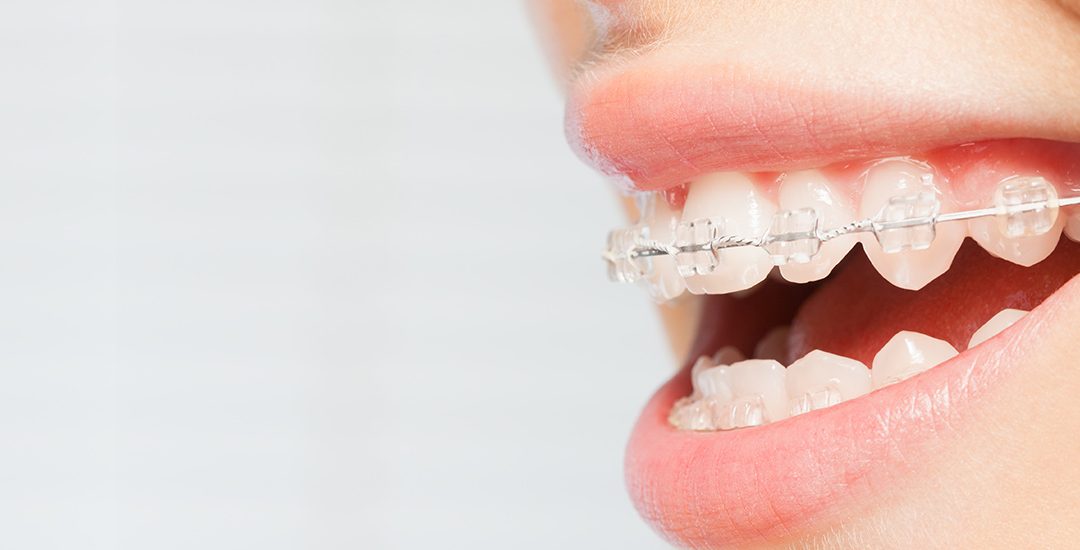Orthodontic treatment is not a “one size fits all” proposition. While there are many ads on social media for at-home treatments, only an orthodontist can decide the best treatment option for you. If you are interested in discovering what orthodontics could do for you, contact our orthodontists, Drs. Walton and Maready in Raleigh, NC today.
Traditional Braces
How Braces Work
Traditional braces are the most common type of orthodontic treatment. Brackets come in metal or clear (ceramic), and most patients don’t need bands on their back teeth. These brackets are attached directly to the tooth with a special adhesive, and the archwire is held in place with small O-rings (that can come in lots of different colors!). These components work together to apply gentle, consistent pressure to your teeth, gradually moving them into the desired position.
Benefits of Braces
- Effective for Complex Cases: Traditional braces can handle even the most severe cases of misalignment, including issues with bite and jaw alignment.
- Durability: Made from high-quality materials, they are robust and can withstand the daily wear and tear of chewing and speaking.
- Cost-Effective: Generally, traditional braces are more affordable than some newer orthodontic treatments.
Considerations
- Aesthetic Concerns: Some people may feel self-conscious about the noticeable metal brackets.
- Oral Hygiene: Braces require meticulous cleaning to avoid plaque buildup and cavities.
- Dietary Restrictions: You may need to avoid certain foods that can damage the braces, like hard candies and sticky snacks.
Clear Aligners
How Clear Aligners Work
Clear aligners, such as Invisalign, were approved by the FDA in 1998 for use in orthodontics. These aligners are clear, thin, plastic trays that are formed to fit your teeth. They are nearly invisible to the eye and can be used on adults, teens, and children. Aligners gently move your teeth into new positions determined by your orthodontist in a custom-designed treatment plan based on images taken of your mouth and teeth.
Typically, each aligner is worn for about two weeks before progressing to the next set. The number of aligner sets depends on the complexity of your treatment. Clear aligners are not right for every problem, so your orthodontist will determine if they are right for your particular needs.
To offer the best aligner treatment, Walter & Maready has partnered with Invisalign®.
Benefits of Clear Aligners
- Aesthetic Appeal: Clear aligners are nearly invisible, making them a great choice for those concerned about the appearance of metal braces.
- Convenience: You can remove them for eating, drinking, and brushing your teeth, which makes maintaining oral hygiene easier.
- Comfort: Made from smooth plastic, they are less likely to cause discomfort or irritation in the mouth.
Considerations
- Discipline Required: Since you can remove them, it requires discipline to wear them for the recommended 20-22 hours per day.
- Cost: Clear aligners tend to be more expensive than traditional braces.
- Not for Severe Cases: They are typically best suited for mild to moderate alignment issues.
Beware Mail-Order Aligners
Do not be tempted by mail-ordered, clear, plastic aligners that claim to straighten your teeth while never leaving your home. These companies send you instructions to take an impression of your own teeth and send it back to the company. You then receive a series of aligners that you wear for a specified time. Sounds easy, right? It’s not. Moving your teeth is a serious medical procedure that demands the oversight of an experienced orthodontist. Moving teeth leads to changes in the way you bite and it changes the shape of surrounding bone and gum tissue. Orthodontic tooth movement requires constant supervision to prevent potentially irreversible and extensive damage such as tooth loss, gum recession, and permanent changes in your bite. Don’t be fooled by advertising. Seek professional care for your teeth and the healthy, confident smile you seek.
Retainers
Another common orthodontic treatment, retainers are removable devices that maintain the alignment of your teeth after your orthodontic treatment is complete. They are necessary after any type of tooth movement, no matter how small, no matter the age of the patient.
Retainers come in several different styles. There are advantages and disadvantages to all three types of retainers. Your orthodontist will discuss your unique retainer needs and help you decide which type is best for you.
- Invisible retainers are clear plastic and completely cover your teeth. They look like Invisalign aligners and barely show when you smile.
- Hawley retainers have a metal wire across the front teeth and clear or colorful plastic on the inside of the teeth. Hawley retainers can have springs added for minor tooth movement.
- A permanent retainer is a thin wire that is bonded to the inside of the front teeth.
Retainers make sure that all the hard work that you put in with braces or clear aligners does not come undone. Teeth are constantly moving throughout your life, and retainers will make sure they stay where they are supposed to! You should follow your orthodontist’s instructions regarding how to wear your retainers.
Braces, the most common orthodontic treatment, have come a long way in the last 20 years. Customized orthodontic treatment is available to anyone who wants to improve their bite and smile. If you have questions about your options, call Walton & Maready Orthodontics today!

